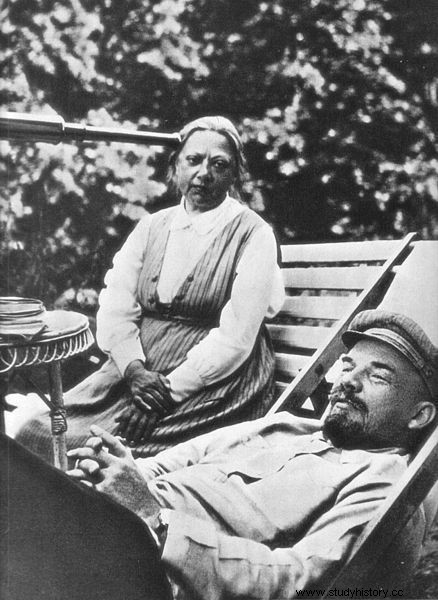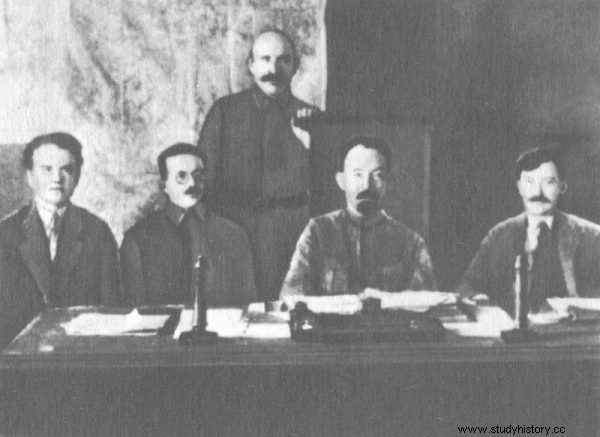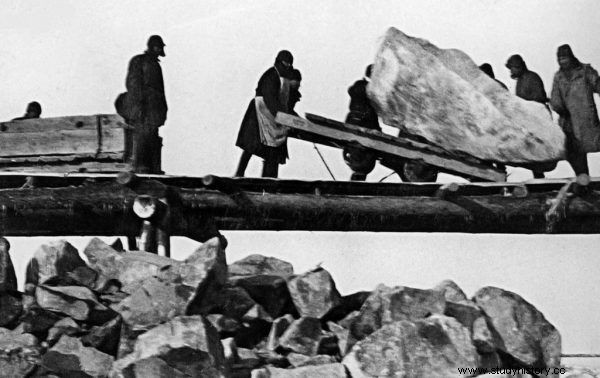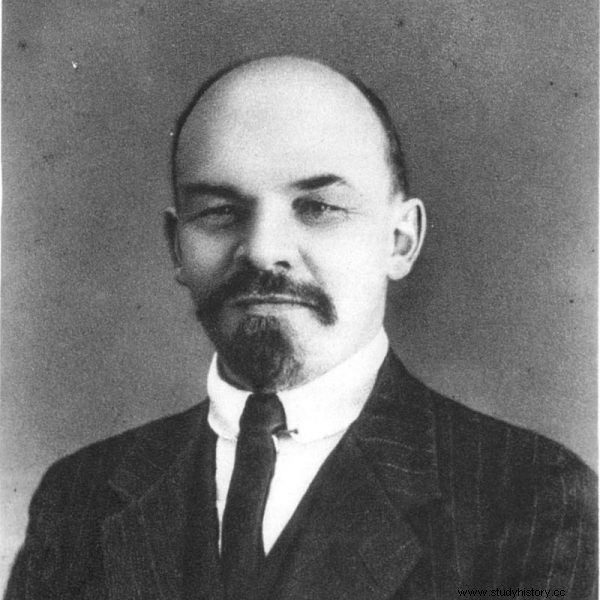In the public mind, the repression in the USSR is associated with 1937 and the rule of Stalin. In fact, the cruel persecution of citizens was initiated by Vladimir Ilyich Lenin immediately after the Bolsheviks seized power on the night of October 25-26 (November 6-7), 1917. Moreover, in 1918 Lenin initiated the establishment of concentration camps for dissidents or for those whom the new rulers suspected (!) Of hostile attitude towards the regime.
Why was Lenin so cruel? For many years he had been obsessed with the idea of overthrowing the monarchy and the triumph of the Bolshevik revolution. He devoted his whole life to the fight against tsarism, so he was ready to do anything to achieve the desired goal.
A traitor to his own homeland
He had no inhibitions to betray his own homeland during the then World War I. The point is that at the time of the abdication of Nicholas II on March 2 (15), 1917, Vladimir Ilyich was in exile in Switzerland and wanted to go to Russia to seize power. But his return home turned out to be difficult, as the English and French, Russia's allies, did not intend to facilitate his journey to his homeland through war-torn Europe. This is because Lenin advocated the defeat of Russia, which was to lead to social unrest in the country.
The only solution to this problem was the help of the Germans, in return for which Lenin undertook to sign a separatist peace with Berlin after the Bolsheviks took power. William II readily agreed to Vladimir Ilyich's proposal, because the military situation of the Reich was serious, and hunger looked into the eyes of German citizens.

Nadezhda Krupskaya and Vladimir Ilyich Lenin
As requested by the Bolshevik leader, Berlin granted him, his wife Nadezhda Krupskaya and 30 of his closest companions a train, which was granted extraterritorial status. When entering and exiting Germany, there was no passport control, the train ran without stops and only stopped at night, no strangers were allowed to enter the carriages. (The train was called sealed, and with that name it went down in history). In addition, German diplomats arranged for Lenin to transit through Sweden, from where he went to Finland and finally to Petrograd.
Vladimir Ilyich arrived in the Russian capital on April 16, 1917 and immediately announced that his goal was socialist revolution. The Germans were satisfied with the activities of their agent, as evidenced by a report by an employee of the Ministry of Foreign Affairs of Poland: “Lenin's arrival in Russia was successful. It works exactly as we wish. ” In addition, Berlin financed the subversive activities of Vladimir Ilyich and his companions, the purpose of which was to destabilize the situation in the country and discredit the Provisional Government. This enabled the Bolsheviks to seize power in October 1917.
Bloody persecution begins
Already at the time of the overthrow of the Provisional Government, the new rulers showed cruelty. During the storming of the Winter Palace, where the ministers of the Provisional Government were located, soldiers brutally cracked down on women from the women's battalion defending the facility. The ladies were first raped and then their bellies ripped open.
Of course, the Bolsheviks realized that they were unwelcome in Russia, especially among people of non-proletarian background. That is why the new rulers were throwing representatives of the elite into prisons. Often the reason for arrest was the fact that the number of rooms in the detainee's flat was greater than the number of household members.

WCzK management (from the left):Jēkabs Peterss, Józef Unszlicht, Abram Bieleńkij, Feliks Dzierżyński and Wiaczesław Mienżynski, 1921
Since the new rulers could not count on the approval of their rule, it had to be forced. Therefore, on December 7, 1917, Lenin created the Cheka (Wsierossiyskaja czrieznaja komissija after the borough are counter-revolutionary and sabotage). The chief described this organization as "the sword and shield of the party" and announced that its main task would be "to expose and eliminate any attempts or actions related to counter-revolution or sabotage, regardless of by whom, throughout Russia." The Cheka was to operate outside the law and submit itself directly to Vladimir Ilyich. Feliks Dzerzhinsky was appointed its head. The Pole quickly began to demand the right to shoot the enemies of the revolution on the spot, without trial. In February 1918, Lenin granted him such permission.
Rising of the Gulag
Włodzimierz Ilyich introduced the principle "Whoever does not work, does not eat". According to it, it was decided that "persons sentenced to imprisonment and able to work - are to be compulsorily directed to manual work". Labor camps were to be established in every governorate city and accommodate at least 300 prisoners. This is how labor camps were created, which went down in history as the "Gulag" (Gosudarstwonnoje empowerment will be more gentle).

Sent to the Gulags, both women and men, were forced to hard labor. The photo shows prisoners of Soviet camps at the construction of a canal connecting the Baltic Sea with the White Sea.
But the punishments did not discourage the Russians from starting more uprisings. In June 1918, in response to information about the riots in the Penzen governorate, Lenin sent the following telegram:
Riots to be crushed mercilessly. Organize a public execution of 100 people (kulaks, bloodsuckers, bourgeoisie). Publish the death lists. Take all the bread from the families of the lost. Make people within 100 versts aware of the execution and tremble, fear and shake because of it. I find very tough people to complete this task. Then report back.
In August, the leader of the revolution mentioned the necessity to establish concentration camps in which "suspects (!)" had to be placed Their existence was validated by the "Red Terror Decree" adopted on September 5, being a response to the attempt on Lenin's life on 30th of August. Moreover, the document announced a shift from individual to mass terror. The new strategy of the Bolsheviks was explained by Dzerzhinsky's deputy Jekabs Peterss:
Any attempt by the Russian bourgeoisie to raise their heads will meet with such an intensification of terror that all our actions so far will fade away.

Vladimir Lenin was responsible for introducing the "red terror"
Literally the day after the publication of the text of the decree, the Soviets carried out public executions of over a dozen former tsarist ministers. In one night, 512 people were shot in Petrograd, in Moscow - 600, in Kronstadt - 400. In addition, there were death sentences on several dozen people made on prisoners of the Peter and Paul Fortress in Petrograd. During the day in Nizhny Novgorod, 46 people were caught in the streets and shot immediately. Executions were carried out in many Soviet cities and towns. Moreover, the above-mentioned figures have been understated, according to reports by British diplomats sent to the Foreign Office in London. According to the Russian historian - professor Sergey Volkov - in the years 1917-1922, around 2 million people were victims of the Bolshevik terror.
